Ernest Miller Hemingway (1899-1961) was an American novelist, short story writer, and journalist.
![Strolling in the American Literature Garden [Part 14] Dạo chơi vườn văn Mỹ [Kỳ 14]](https://vstatic.vietnam.vn/vietnam/resource/IMAGE/2025/1/19/8ace5361f3424a93bc164152c6b6feb1) |
| Writer Ernest Miller Hemingway. |
Hemingway was born in Oak Park, Illinois, to a doctor father and a singer mother. His family owned a home on Walloon Lake, near Petoskey, Michigan, and spent summers there. These early experiences living close to nature instilled in Hemingway a lifelong passion for outdoor adventure and for living in remote areas.
He did not attend college, was self-taught, and began his writing career as a correspondent for The Kansas City Star. On the occasion of the 100th anniversary of Ernest Hemingway's birth (1899), The Star recognized Hemingway as the paper's leading reporter of the past hundred years.
Hemingway’s writing style is economical (“telegraphic”), concise, simple, and has had an important influence on the development of 20th-century literature. The central characters in his works are people with characteristics of stoicism. Many of his works are now considered classics of American literature.
Hemingway was one of the wounded World War I veterans known as the “Lost Generation”. In 1953, he received the Pulitzer Prize for his novel The Old Man and the Sea and the Nobel Prize for Literature in 1954 for his lifelong literary contributions.
He traveled to many countries, especially France, working as a press correspondent. The novel The Sun Also Rises (1926) was his first acclaimed work. Using a realistic writing style, he described the contentless, aimless life before and after World War I of a group of American writers living in exile in Paris. A Farewell to Arms (1929) is an anti-war novel, highlighting the inhumanity of militarism. The story is about a young officer who was wounded, deserted, and escaped with his lover, a female medic, but the lover died, war was the culprit that destroyed happiness. Hemingway represented the "Lost Generation" of some American writers in the 20s, lost all ideals and beliefs, lost and lost.
For 10 years, from 1929-1939, Hemingway was passionate about bullfighting in Spain and wrote Death in the Afternoon (1932); Green Hills of Africa (1935) described his hunting trips. He considered hunting and bullfighting as a test and a means to understand death. He worked as a front-line correspondent during the Spanish Civil War (1936), praised heroic people in For Whom the Bell Tolls (1940) and the counterintelligence play The Fifth Column (1938).
The short novel To Have and Have Not (1937) depicts a bitter scene of the economic crisis, criticizes society, and expresses the author's anxiety. Right from the Second Congress of American Writers, he first openly attacked fascism. During World War II, he worked as a frontline correspondent in England and France, following the guerrillas to liberate Paris. Across the River and Into the Trees (1950) tells the story of the love and death of a general demoted to the rank of colonel immediately after the war.
The short story The Old Man and the Sea (1952) praises man's victory over nature, and is a world- famous work. From the sadness of the "Lost Generation", Hemingway transformed, praising the spiritual strength of man confronting nature in a lonely and fierce struggle.
For Whom the Bell Tolls, a novel that reflects the souls of intellectuals in the 1930s, their need to devote themselves to an ideal, in contrast to Hemingway's own boredom and disappointment in the 1920s. The style is not dry as he usually writes, but full of romantic lyricism, expressing the human condition in the game of love and death.
The story is set during the Spanish Civil War (1936-1939). Robert Jordan, an idealistic American university professor, goes to Spain to fight on the side of the Republic. His mission is to blow up a strategic bridge. He joins the guerrilla team led by Pablo and his wife Pilar. Pilar, a strong-willed peasant woman, represents Spain and the will to freedom. Jordan falls in love with Maria, a guerrilla woman who was raped by the fascists.
During the three days they lived together, even though death was near them, the two loved each other passionately, forgetting about time and war. The fascists crushed the guerrillas nearby. Jordan knew that blowing up the bridge at this time would be useless, but the general staff had decided, so he still carried out the order. The bridge collapsed, but he broke a leg. He ordered everyone to retreat, and he stayed alone at the edge of the forest, waiting for the enemy. Although he wanted to live, he accepted death.
The novel For Whom the Bell Tolls can be considered a work of “redemption” and repentance by the author, turning to a path of dedication, contrary to his previous period, living as a person irresponsible to society. The characters in the work have personalities similar to himself in each period, often haunted by the dialectic pair “fear - courage” or “hardness - weakness”.
Source: https://baoquocte.vn/dao-choi-vuon-van-my-ky-14-278476.html





![[Photo] Keep your warehouse safe in all situations](https://vphoto.vietnam.vn/thumb/1200x675/vietnam/resource/IMAGE/2025/10/1/3eb4eceafe68497989865e7faa4e4d0e)


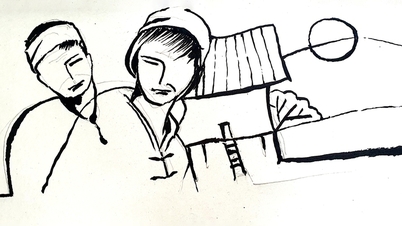


















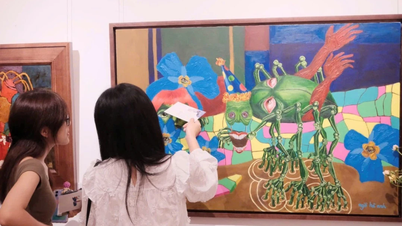






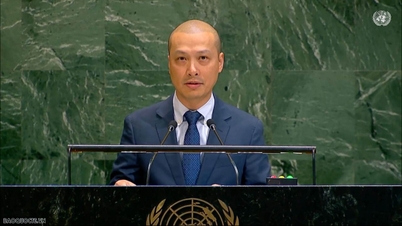




![[Photo] President of the Cuban National Assembly visits President Ho Chi Minh's Mausoleum](https://vphoto.vietnam.vn/thumb/1200x675/vietnam/resource/IMAGE/2025/10/1/39f1142310fc4dae9e3de4fcc9ac2ed0)

























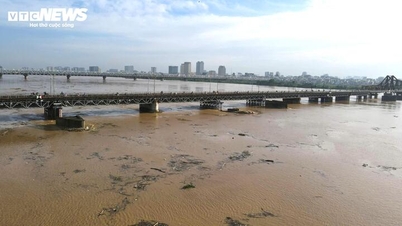


















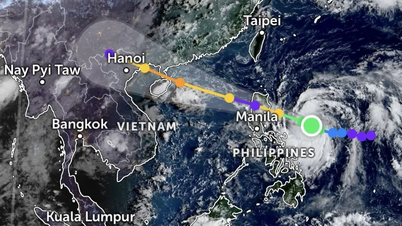


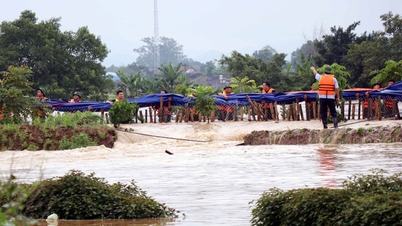
















Comment (0)